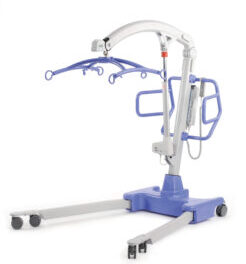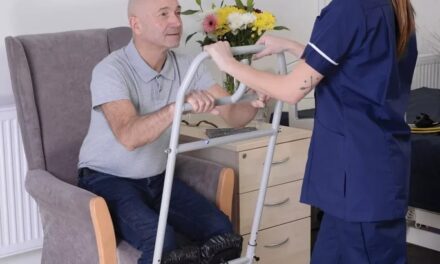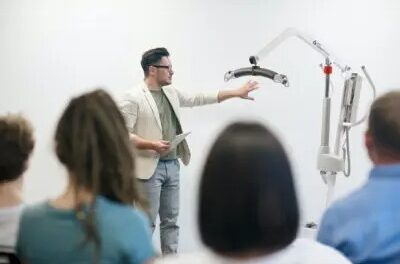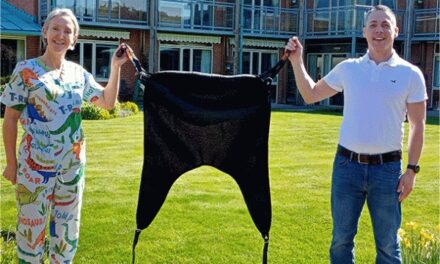In the dynamic world of healthcare, ensuring the safety and well-being of patients is paramount. Safe patient handling promotes patient comfort and protects them from the serious injuries that can occur during transfers. It also helps protect healthcare staff from injuries and strains that commonly occur when moving patients.
At the heart of safe patient handling are nurses, unsung heroes who play a pivotal role in facilitating patient mobility and maintaining these patients’ safety. Safe patient handling depends on caring, skilled nurses who use their expertise to protect their patients during transfers.
The Significance of Safe Patient-Handling Techniques
Every shift, nurses face the challenge of moving and handling patients. Improper techniques can lead to injuries for both the patient and the nurse. According to a study from the National Institutes of Health, musculoskeletal disorders are prevalent among nurses due to the physical demands of their jobs. This not only affects the health of the nurses but also impacts the quality of care they provide to their patients.
With the right safe patient-handling techniques, however, these risks can be minimized. Proper handling ensures fewer injuries, leading to better patient care and increased efficiency in healthcare settings. It’s a win-win for both healthcare providers and patients.
The Role of Patient Mobility
Patient mobility is a crucial aspect of a patient’s recovery and overall well-being. This concept refers to the ability of a patient to move and function independently. Enhanced mobility practices can lead to faster recoveries, reduced hospital stays, and improved patient satisfaction. When patients can move with ease, they also feel more in control, leading to a positive mindset that aids in their recovery.
Safe Patient-Handling Techniques for Nurses
There are several different patient-handling techniques that nurses can implement to promote patient safety. Here are our top ten safe patient-handling techniques for nurses:
- Proper body mechanics – Always maintain proper posture and alignment when moving or lifting patients. This reduces strain on the back and ensures the patient’s safety by reducing the burden on the nurse during the transfer.
- The “slide and guide” method – This technique involves guiding a patient from a lying to a sitting position with minimal effort. It’s all about leveraging the patient’s weight, using smooth movements, and sliding (preferably with the use of a friction reducing device) instead of lifting.
- Using assistive devices – There’s a plethora of equipment designed to aid in patient transfers. Slide sheets, transfer belts, and hoists can make the process smoother and safer.
- Lift Team – Lifting without enough people present can significantly increase the risk of injury. Lifting as a team can help to reduce this risk by decreasing the weight each individual bears.
- The “log roll” technique – Ideal for patients with spinal injuries or surgeries, this method involves turning the patient by keeping their spine aligned.
- Pivot transfers – This technique helps patients move from bed to chair or vice versa. It involves pivoting the patient’s body, often with the aid of a gait belt, while keeping their feet stationary or while keeping their center of mass directly over their feet.
- Gait training with support – For patients learning to walk again or with gait impairments, assistive devices like walkers or canes can be invaluable. Support devices lessen the manual work and support that nurses need to provide.
- Pre-transfer communication and planning – Always communicate with the patient before any transfer. Let them know what to expect and how they can assist, ensuring a smoother transition.
- Regularly assessing patient’s mobility status – Patients’ mobility can change over time, sometimes within hours. Regular assessments help nurses choose the most appropriate handling technique and best maintain each patient’s safety.
- Ongoing training and skill refreshment – The world of healthcare is always evolving. Nurses should continuously update their skills and learn the latest techniques to ensure they are providing the best care possible.
The Future of Safe Patient-Handling
The future of patient transfers looks promising, with new advancements in technology and equipment well positioned to better aid nurses in ensuring patient mobility. Companies like Joerns are at the forefront of this revolution, offering state-of-the-art equipment and training. By partnering with forward-looking companies, healthcare facilities can ensure they are equipped with the best tools and knowledge.
Conclusion
Safe patient-handling techniques are more than just procedures; they are the embodiment of care and compassion. Nurses play an indispensable role in ensuring patient mobility, and with the right techniques, they can do so efficiently and safely.
Every patient deserves the best care, and every nurse deserves the best tools and training. Ensure the utmost safety and care in your facility. Partner with Joerns today to elevate your safe patient-handling practices!
To read the original article please see here



